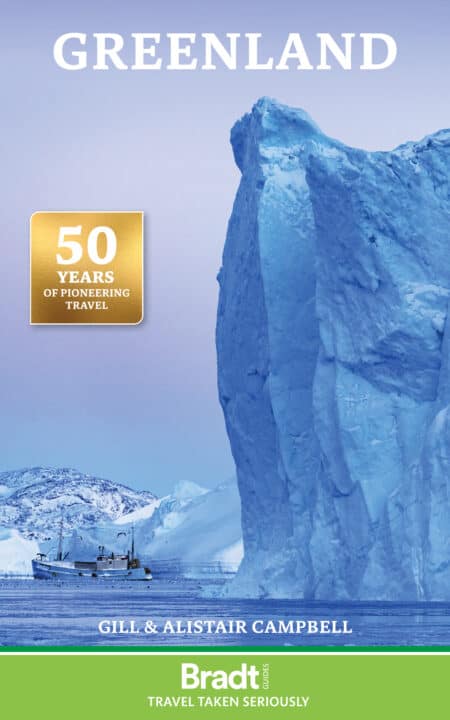Antarctica
A Guide to the Wildlife
Publication Date: 09th May 2025
£18.99
Antarctica wildlife guide. Pen portraits and illustrations of key wildlife species, covering natural history and identification of penguins, albatrosses, seals and whales. Also covers Antarctic exploration history, advice for visitors, petrels, cormorants, sheathbills, skuas, gulls, terns, fish, terrestrial plants and marine invertebrates.
Available on back-order
ISBN: 9781804692677
Published: 09th May 2025
Edition: 8
Number of pages: 152
About this book
Antarctica is home to the world’s largest concentration of wildlife in the coldest, windiest and driest place on earth. Cruise the Southern Ocean for a wandering albatross, land on continental beaches to sit with thousands of penguins, keep a sharp eye open for humpback whales against a backdrop of snow-covered mountains soaring upwards from the sea, marvel at orcas harrying Weddell seals off ice floes, or gawp at a leopard seal as it grabs and flays a penguin. Visiting Antarctica means being in your very own natural-history documentary.
Conditions may be extreme, but wildlife thrives in superb scenery. Bradt’s Antarctica: a guide to the wildlife brings to life the history of exploration (and exploitation) in this vast polar desert, where two-thirds of the world’s fresh water is locked up as ice on a continent twice the size of Australia. This readable introduction to mammals, birds, fish, invertebrates and plants is ideal for those ‘going south’ to the world’s highest continent, where more than half the land exceeds 2,000m above sea level.
Celebrating the amazing species of this spectacular environment, the guide features chapters on the region’s famous whales and penguins alongside entries on lesser-known species like skuas and sheathbills. Each species account blends extensive insights into natural history with identification tips and stunning artwork. Although focusing on wildlife on the Antarctic Peninsula, an appendix on South Georgia’s wildlife briefs those whose itinerary extends to that island.
Updated throughout to address the needs of a flourishing but environmentally conscious tourism industry, this eighth edition takes account of evolving changes in population dynamics of Antarctic creatures, and reflects profound changes ice-shelf extent, which have made it easier for expedition vessels to contemplate visiting emperor penguin colonies.
Written by renowned expedition leader and former natural-history broadcaster Tony Soper and illustrated with specially commissioned paintings by Dafila Scott (granddaughter of ‘Scott of the Antarctic’, no less), Bradt’s Antarctica: a guide to the wildlife is an informative, entertaining guidebook that will whet your appetite for this trip of a lifetime – and will always be within arm’s reach when you get there.
About the Author
Tony Soper co-founded the BBC’s Natural History Unit and made wildlife films worldwide. He was bowled over by Antarctica on his first visit in 1992, when he sailed the ‘furious fifties’ as a lecturer on the pioneer tourist vessel World Discoverer. Looking for a pocket guide to the region’s birds, he found there was no such thing, so wrote his own version on small cards. On return, he persuaded his friend Hilary Bradt to let him upgrade the cards to a paperback book. The eight editions of Bradt’s Antarctica: a guide to the wildlife are the result. Like the trans-hemisphere Arctic tern, Soper migrated numerous times to the deep south. Working as expedition leader or wildlife lecturer, he crossed the dreaded Drake Passage over a hundred times to enjoy the endless excitement and pleasures of exploring Antarctica’s spectacular scenery and its world of penguins and great whales. Tony Soper died in 2024.
After training and working as a zoologist, Dafila Scott (dafilascott.co.uk) turned to drawing and painting. Much of her work is inspired by wildlife and landscape, featuring animals or places with which she has become familiar, notably Antarctica – a region with which she has a long family connection, including through her grandfather (Captain Robert Scott, aka ‘Scott of the Antarctic’). As daughter of conservationist and broadcaster Sir Peter Scott, she has been steeped in nature since childhood. A member of the Society of Wildlife Artists, in 2017 she won that Society’s RSPB Award.
Reviews
‘Sensational! The most concise and accurate account on the market.’
Peter Harrison, Author Seabirds of the World
‘Few people can claim to be thoroughly familiar with Antarctic wildlife. Most of us visiting the deep south are doing so for the first time and thirst for some authoritative guidance. Here, at last, is the book we have been waiting for.’
Sir David Attenborough
‘For anyone Antarctica-bound, this is the book. Tony Soper’s facts and Dafila Scott’s drawings cover the essentials of all the living things you will see and introduce the drama of the stage itself. Vital as long-johns.’
Keith Shackleton
Additional Information
Table of ContentsINTRODUCTION
DISCOVERY AND EXPLOITATION:
Explorers, Sealers and Whalers
TERRESTRIAL PLANTS AND INSECTS
MARINE INVERTEBRATES
FISH
BIRDS Penguins
Albatrosses
Petrels and Shearwaters
Cormorants
Sheathbills
Skuas
Gulls
Terns
MAMMALS
Seals
Whales
APPENDICES
SOUTH GEORGIA, TERRESTRIAL AND FRESHWATER SPECIES
GLOSSARY OF SNOW AND ICE
GUIDELINES FOR VISITORS TO THE ANTARCTIC
USEFUL WEBSITES
FURTHER READING
INDEX




